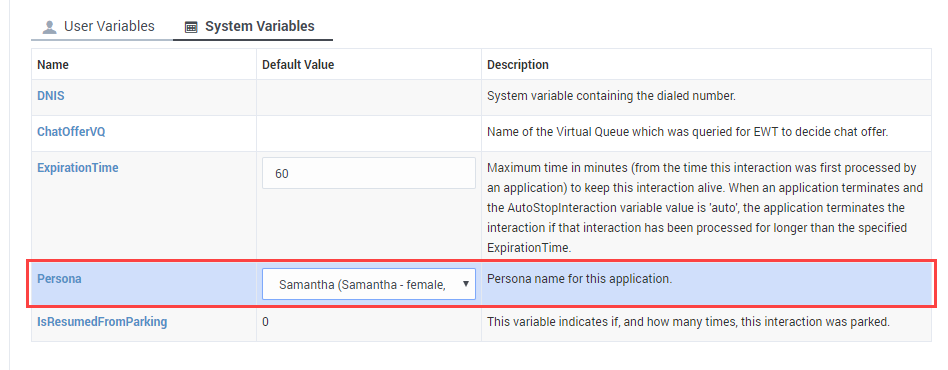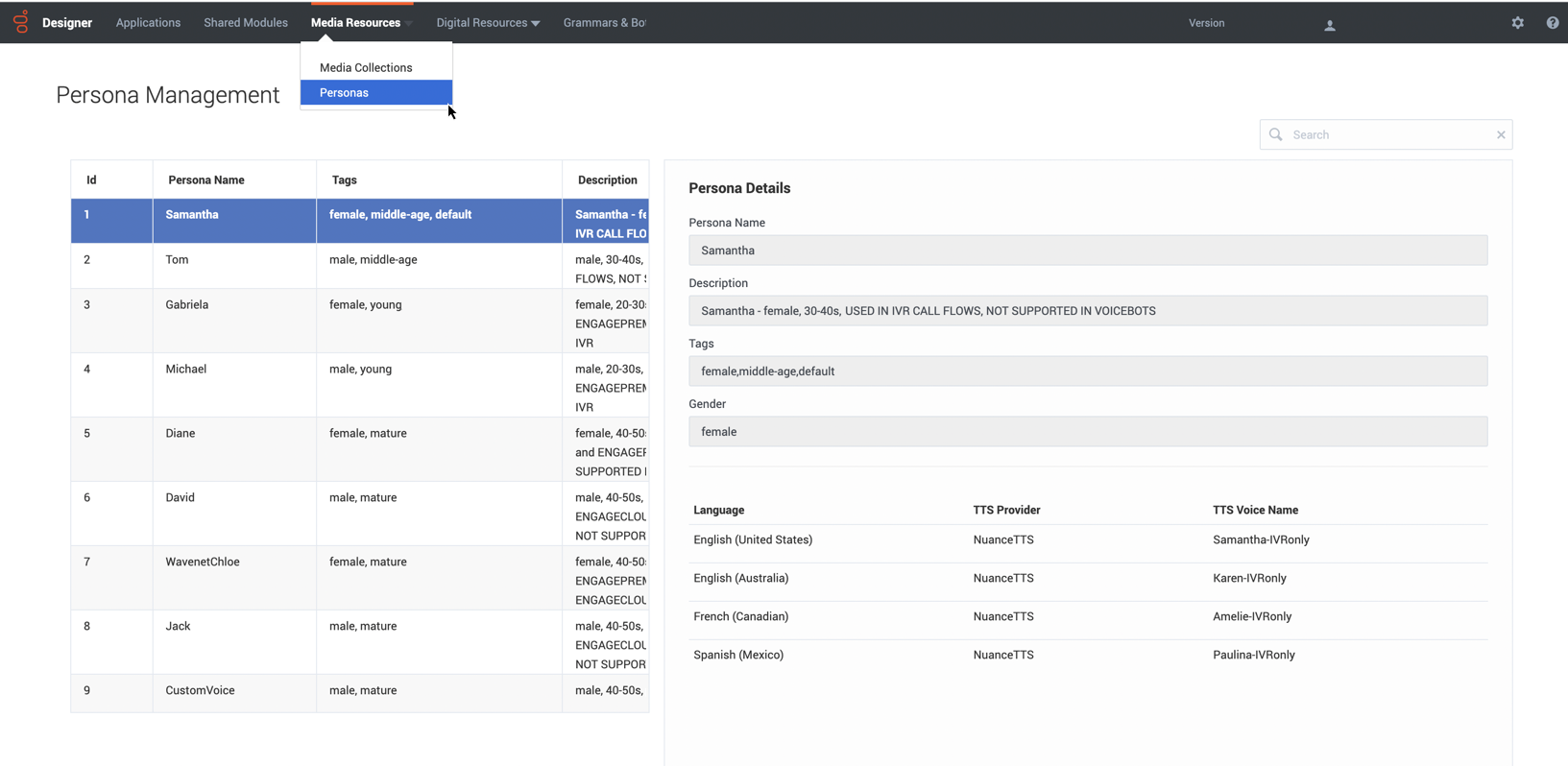Personas
Contents
Choosing a persona for your application can provide customers with a more personalized experience.
What is a persona?
A persona is an artificial voice that you can use to control Text-to-Speech (TTS) services in your applications. They are designed to sound more natural and conversational than the robotic voice that is typically associated with IVRs and can portray certain personality characteristics that customers might find more appealing or appropriate. For example, you might choose a more formal-sounding persona for one particular type of scenario and a cheerful one for another.
The following are examples of persona types (provided for illustrative purposes only):
- Samantha (female, 30-40s)
- Tom (male, 30-40s)
- Gabriela (female, 20-30s)
- Michael (male, 20-30s)
- Diane (female, 40-50s)
- David (male, 40-50s)
Depending on how you want to use personas, you can set the related system variable to apply a persona globally to the entire application or use a Change Persona block block to switch to a different persona at a specific point in the application.
Enabling personas
Personas are not enabled by default. To enable personas for an application, go to the Persona tab in the application settings and select the Enable Persona check box.
After personas are enabled, you can select a persona for the application.
Disable personas
If you want to disable personas for an application, clear the Enable Persona check box. Any personas specified by the Persona system variable or Change Persona blocks will then be ignored and all TTS services will revert to the default voice that is provided by that service.
Selecting a persona
To set a persona that will be used globally throughout the entire application, go to the System Variables tab in the Initialize phase. Find the Persona variable and select the type you want from the list of available personas.
For example:
The persona that you select will be used by any blocks that are using Text-to-Speech (TTS) services, such as Play Message, User Input, Menu, Bot, Route Call, and Route Agent. If desired, you can change the persona at various points in the application.
If personas are enabled for the application and you don't select a specific persona (or choose use default from the list) the default persona is used. Typically, the default persona is "Samantha", but this can vary depending on your configuration.
Changing the persona
You can use a Change Persona block to dynamically change the persona. You can add this block to the Self Service or Assisted Service phase of your application or use it in a shared module. The new persona takes effect with the next prompt that is played.
Switching personas is useful when you want to use certain personas for specific situations. For example, you might want to use a more formal persona when dealing with sensitive customer issues, or switch to different personas depending on the customer segment being served ("Gold" customers get one type of persona, "Blue" ones get another).
For more information about using this block, see the Change Persona block page.
Managing personas
You can view a list of available personas on the Media Resources > Personas page. From this page, you can select a persona to view additional details about it, such as the Language, TTS Provider, and TTS Voice Name.
What happens if the language changes?
If the language of the application is changed (such as by a Change Language block), the TTS voice continues to use the selected persona. For example, if you are using the persona of a young female and the language changes from English to Spanish, the voice will still use that type of persona. If there is no voice available that matches the selected persona, an alternate voice or TTS service is used for that language.



